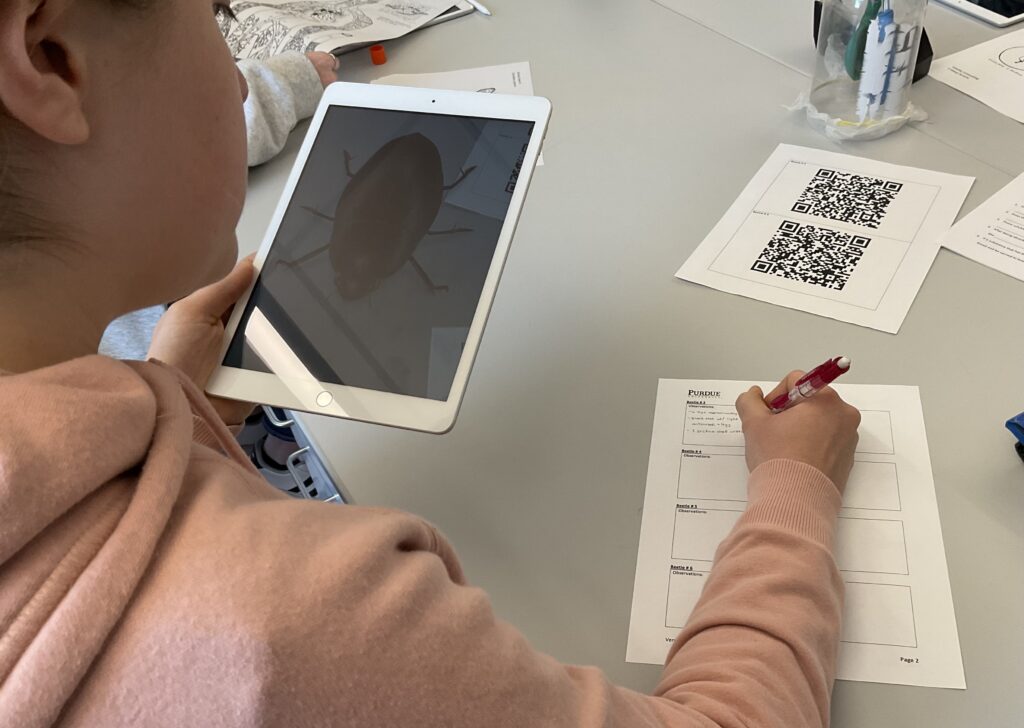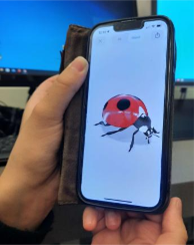Lowell’s collaborative team develops XR/AR tech to assist teachers, engage students in science learning
How can instructors better teach science, specifically taxonomy and classification? A collaborative Purdue University team created innovative Extended Reality (XR) and Augmented Reality (AR) instructional materials and resources to help teachers and to enhance student learning and engagement.


Students use AR-enhanced images of (l) a lightning beetle and ( r) a Japanese beetle to document and classify the insects’ characteristics. (Images/V. Lowell)
“Science teachers typically teach taxonomy and classification activities through class discussions, worksheets, and graphic organizers due to the challenges of accessing resources such as specimens that provide a more authentic learning experience,” said Victoria Lowell, clinical professor of learning design and technology and research project lead. “This is especially true in public and less-affluent schools where access to teaching resources remains challenging.”
The team included researchers from the Colleges of Education and Science and Purdue’s Envision Center.

AR viewer. (Image/V. Lowell)
The purpose of the project was to develop, implement, and test AR-enhanced instruction in biology classes at Michigan City Area Schools (MCASs) and in Purdue’s biology course for Elementary and Science Education pre-teachers (Bio 206). Its goal was to address the need for a more engaging, authentic, immersive, equitable, inclusive, and sustainable approach to learning taxonomy and classification capable of being employed with multiple modalities (e.g., in-person, hybrid, or online), and text, images, videos, and AR.
In 2022, the initial research team created instructional materials and resources for providing AR-enhanced instruction on taxonomy and classification. The existing instructional activities have been developed based on Next Generation Science Standards (NGSS MS-LS4-4; HS-LS4-5). For use during the lessons on taxonomy and classification, the team developed six AR beetles that are native to Indiana (Ladybug, Emerald Ash Borer, Lightning Beetle, Ladybug, Japanese Beetle, and Diving Beetle). During the lessons, students viewed the 3D insect assets using a device (e.g., phone, tablet) and the AR application Sketchfab.

In the spring of 2023, the AR-enhanced lesson was used in Indiana middle schools and Purdue undergraduate biology classrooms. The AR-enhanced classification and taxonomy activities take learners through the development of observational skills specific to making detailed comparative observations (i.e., Beetle Observation & Wonder). Preliminary data from these pilot studies suggest that the AR tool positively affects student and teacher perceptions.
“This exceptionally successful project has provided teachers and students with an innovative method and resources to meet this need for specialized science instruction,” Lowell said.
Source: Victoria Lowell, vllowell@purdue.edu